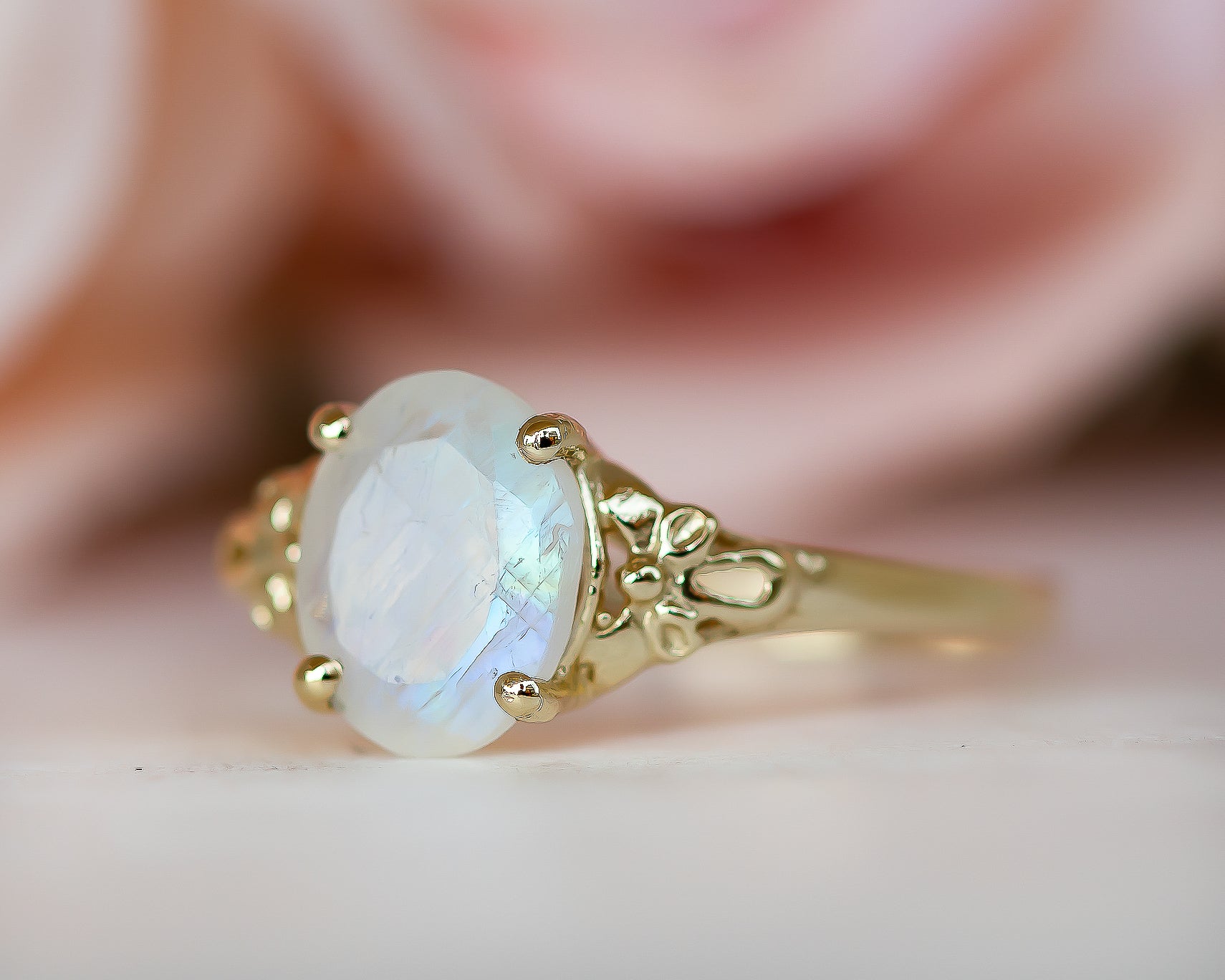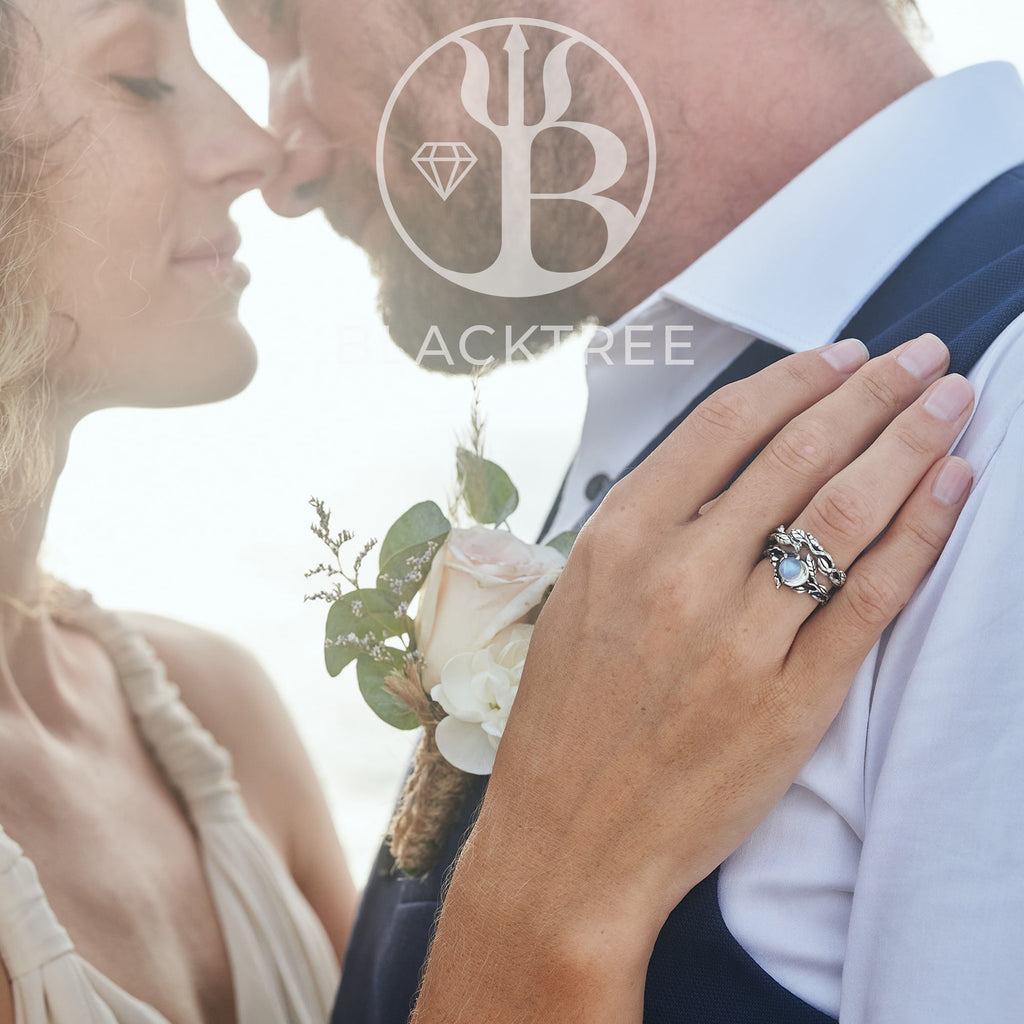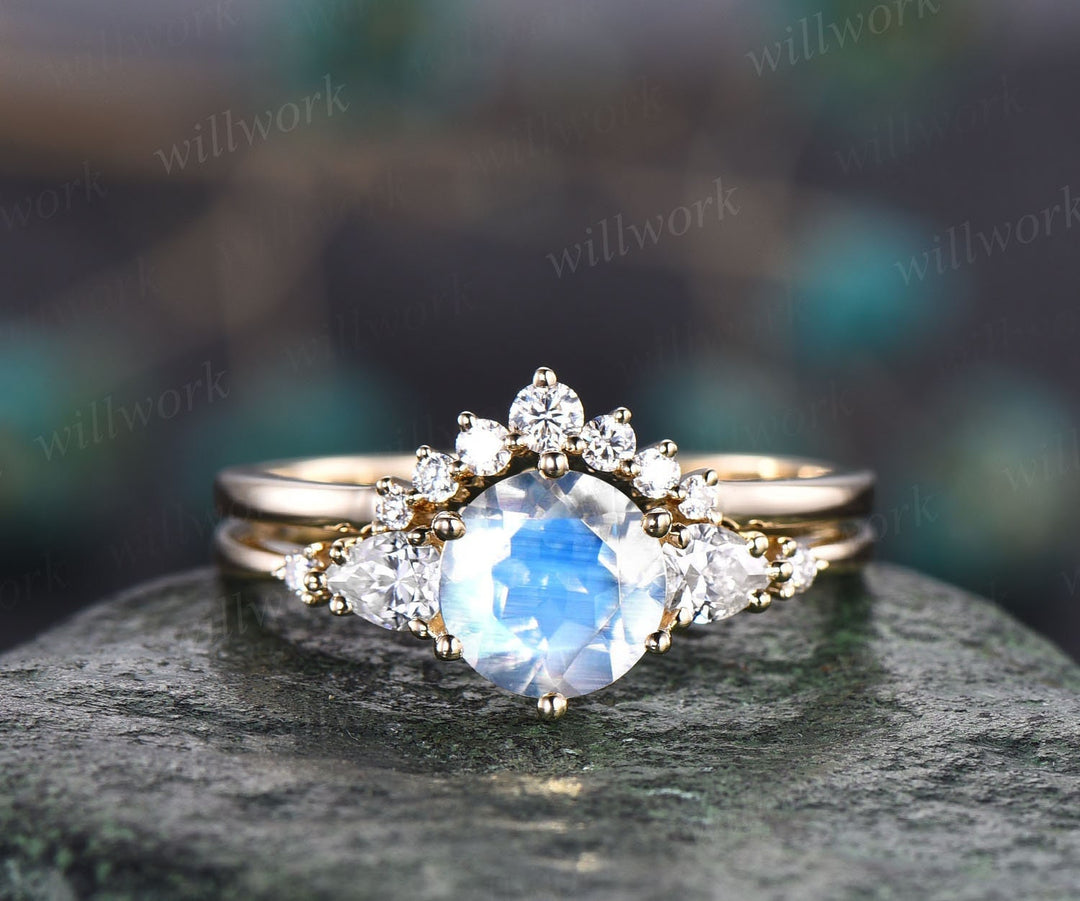Discover the Allure of Sterling Silver Rings with Moonstone
Discover the Allure of Sterling Silver Rings with Moonstone
Blog Article
Recognizing the Workmanship and Value of Moonstone Precious Jewelry in Different Societies Worldwide
The craftsmanship and relevance of moonstone precious jewelry use an interesting glimpse into the varied cultural narratives that surround this captivating gem. From its adored condition in Indian events to its celebrated existence in European Art Nouveau, moonstone offers as a conduit for numerous artistic expressions and beliefs.
Historical Beginnings of Moonstone
Moonstone's historical origins can be mapped back thousands of years, deeply rooted in the societies of old human beings. In India, moonstone is taken into consideration a sacred stone, believed to embody the energy of the moon and linked with lunar deities.
In addition to its aesthetic appeal, moonstone was typically used in fashion jewelry as a sign of security and support during travels. The rock's special optical sensations, referred to as adularescence, captivated artisans that incorporated it right into complex designs, enhancing the allure of their creations.

Social Symbolism and Beliefs

Across numerous societies, moonstone has been imbued with rich symbolism and varied beliefs that reflect its magical high qualities. In ancient India, moonstone is revered as a spiritual stone, believed to bring good luck and enhance intuition. It is commonly linked with the lunar divine beings, embodying the serene and nurturing elements of the moon.
In Roman culture, moonstone was thought to be developed from solidified rays of moonlight, signifying secret and enchantment. It was believed to promote love and interest, making its location as a prominent gems among lovers - moonstone jewelry. In the Center Ages, moonstone was linked to security and was thought to secure travelers during their journeys.
In lots of Indigenous American tribes, moonstone is thought about an effective recovery rock, related to the female spirit and the cycles of nature. It is frequently used in rituals to link with the moon's energy, enhancing spiritual recognition.
Craftsmanship Methods and Approaches
In the realm of precious jewelry production, the craftsmanship methods and approaches utilized in dealing with moonstone are as varied as the cultures that treasure this treasure. Jewelers utilize various practices that highlight moonstone's special optical homes, especially its adularescence-- the soft glow that seems to originate from within the rock.
One usual technique is cabochon cutting, which boosts the stone's natural charm by producing a smooth, rounded surface area. This approach permits light to interact wonderfully with the stone, producing an exciting aesthetic impact. Craftsmens usually employ conventional hand-polishing strategies, making sure that the stone maintains its appeal and reflective top qualities.
Along with brightening and reducing, the setting of moonstones is vital to their total visual. Many jewelers favor intricate metalwork, such as filigree or granulation, to enhance the aerial nature of moonstone. These approaches not just protect the stone but additionally include an imaginative measurement to the piece.
Additionally, some cultures integrate symbolic themes or designs that reflect their heritage, boosting the workmanship past simple performance to a form of narration. This mix of methods leads to moonstone fashion jewelry that is both beautiful and rich in cultural relevance.
Moonstone Precious Jewelry Worldwide

In ancient Rome, moonstone was thought to symbolize the significance of the moon, representing love and fertility. Romans frequently included it into their precious jewelry, connecting it with defense and good luck. In a similar way, in Europe during the Art Nouveau period, moonstone gained appeal amongst artisans that appreciated its one-of-a-kind optical sensations, such as adularescence, which added deepness and intrigue to their creations.
In Southeast Asia, particularly in Myanmar, moonstone is crafted right into elegant fashion jewelry that showcases local creativity and social heritage. The stone's association with peace and psychological balance resonates deeply in these societies, making it a favored option for both daily wear and moonstone jewelry unique celebrations.
These diverse cultural analyses highlight moonstone's global appeal, transcending geographic limits and enhancing the international landscape of fine fashion jewelry. - moonstone jewelry
Modern Trends and Innovations
The enduring appeal of moonstone remains to motivate modern developers and artisans, that are reimagining its usage in modern jewelry. Over the last few years, there has actually been a remarkable shift in the direction of minimalist styles that highlight moonstone's one-of-a-kind optical properties, specifically its adularescence-- a soft, beautiful luster that captivates the eye. Developers are increasingly including moonstone right into streamlined setups, often matching it with alternative metals like climbed gold and recycled silver, thus embracing sustainable practices.
Innovations in gemstone treatments have actually likewise emerged, permitting a broader series of shades while still maintaining the rock's innate appeal. This has resulted in the increase of more vibrant moonstone varieties, appealing to a more youthful, trend-conscious target market. The combination of moonstone with other gems has become a preferred pattern, producing striking contrasts and enhancing the total aesthetic.
The surge of tailored precious jewelry has also influenced moonstone's popularity, as customers look for distinct pieces that mirror their originality. Custom-made designs including moonstone are progressively in demand, permitting wearers to get in touch with the stone's social significance while appreciating its modern-day appeal. This mix of custom and development makes certain that moonstone stays a relevant and treasured choice in contemporary fashion jewelry design.
Final Thought
To conclude, the craftsmanship and value of moonstone fashion jewelry mirror a diverse cultural heritage that extends throughout different civilizations. Each culture's one-of-a-kind significance and imaginative techniques contribute to the gemstone's enduring attraction. From ancient Rome's safety ideas to India's ceremonial virtuosity and the Art Nouveau motion's party of its angelic top qualities, moonstone remains to mesmerize. The development of workmanship and modern advancements better enhance its condition, making certain that moonstone fashion jewelry continues to be a cherished expression of charm and cultural identification.
The craftsmanship and importance of moonstone fashion jewelry use an interesting look into the diverse social stories that border this exciting treasure.Jewelry featuring moonstone is celebrated globally, reflecting diverse spiritual beliefs and social appearances.The surge of tailored precious jewelry has likewise impacted moonstone's appeal, as customers seek distinct items that show their uniqueness.In final thought, the craftsmanship and significance of moonstone precious jewelry show a diverse cultural heritage that spans throughout different worlds. The evolution of workmanship and contemporary technologies better improve its status, making certain that moonstone precious jewelry remains a treasured expression of charm and cultural identification.
Report this page